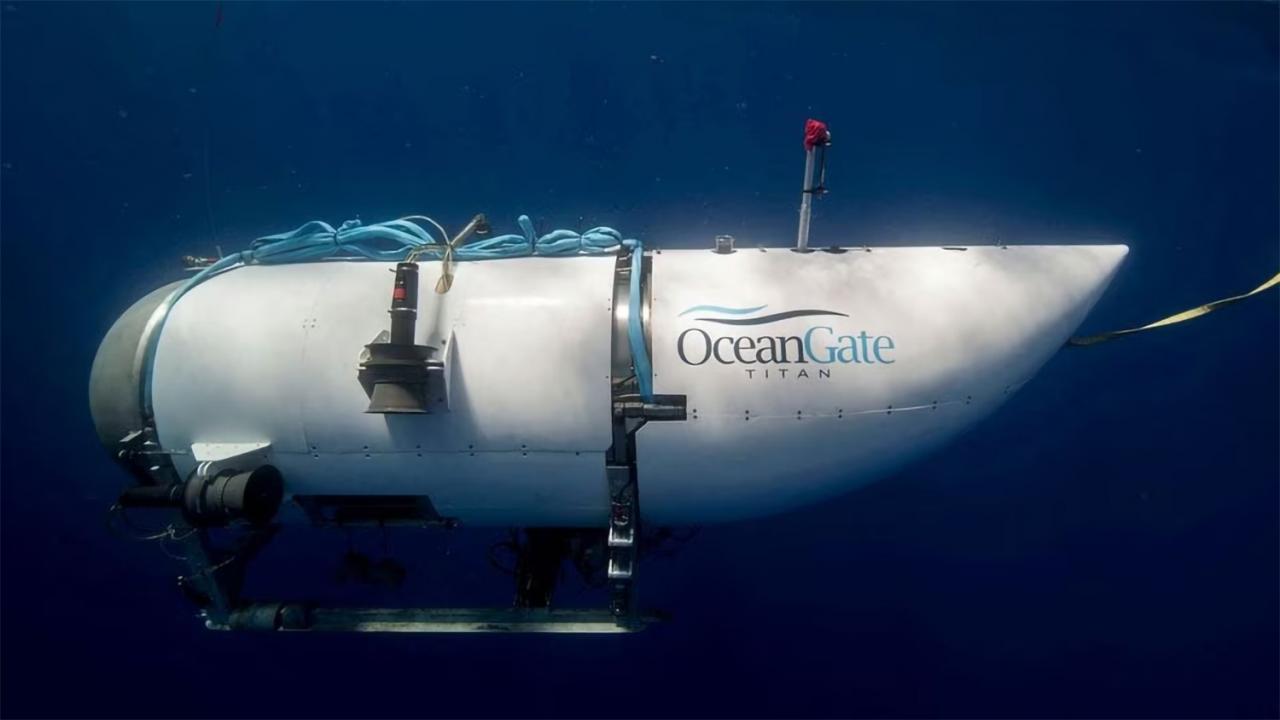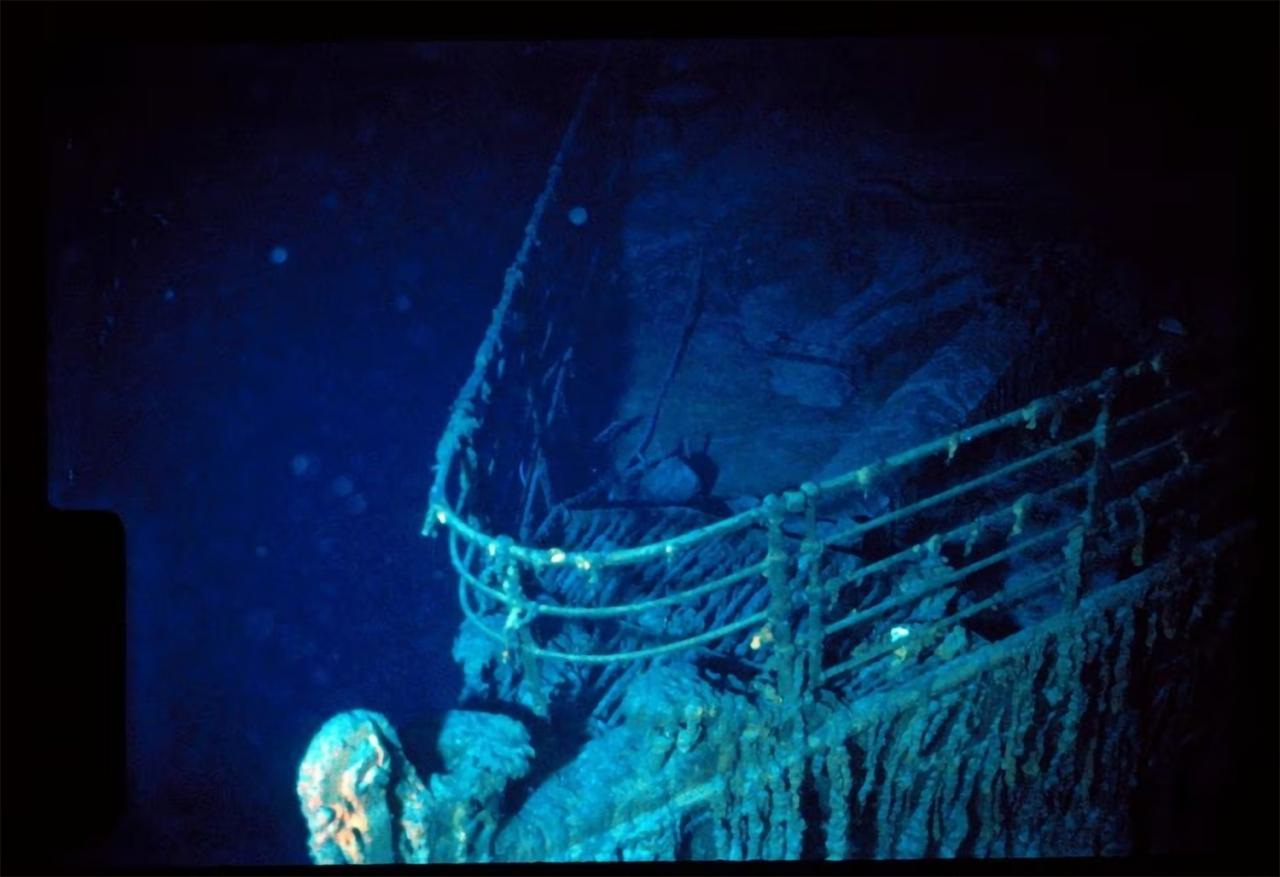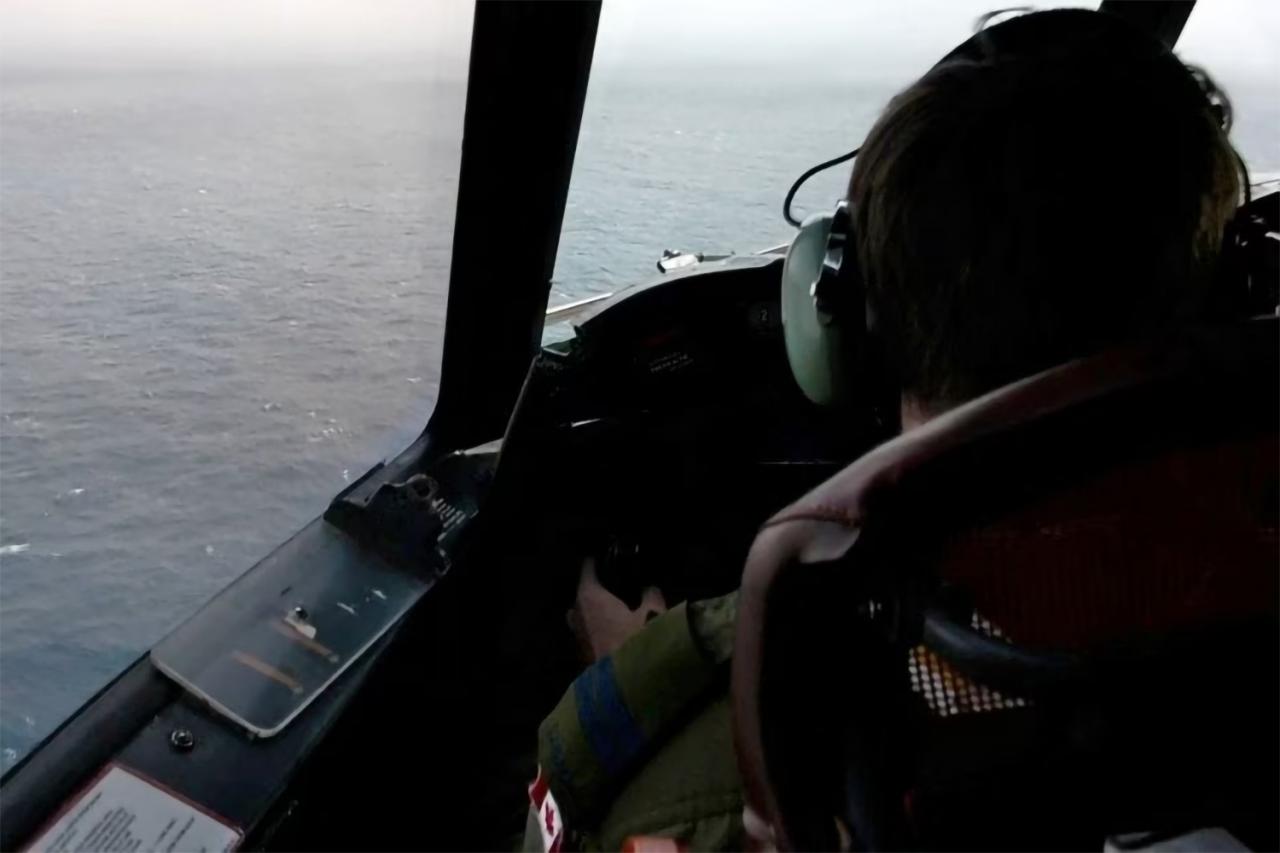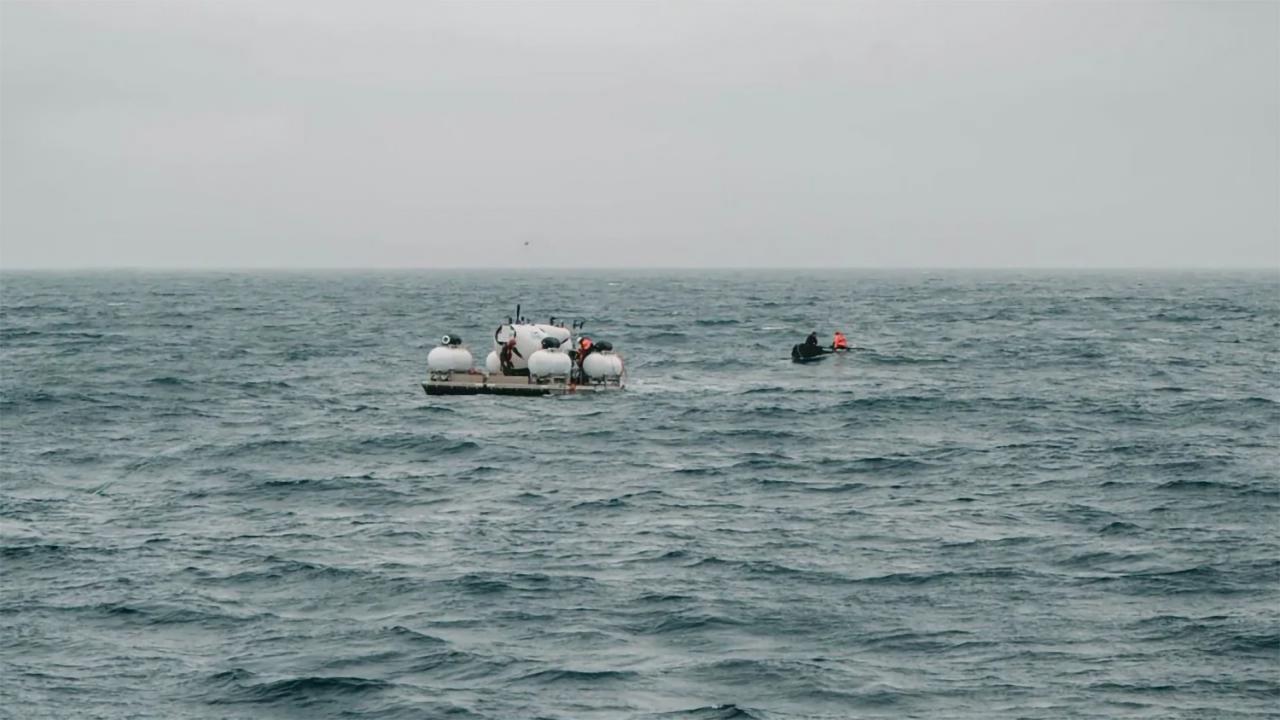How was the Titan designed?
OceanGate designed the Titan to take up to five people to depths of 4,000m in the ocean. The wreck of the Titanic lies at a depth of about 3,800m below the ocean floor.
The Titan weighs 9,525kg and can travel at a speed of 5.6km/h. It is equipped with LED lighting, a sonar system, high-end cameras and has only one window.
OceanGate said the Titan has a life support system that can keep five people alive for up to 96 hours.
According to David Pogue - a journalist for CBS News who explored on Titan in 2022, the ship's carbon fiber walls are 13cm thick and each end of the ship is covered with titanium domes.
 |
| The Titan submersible operated by OceanGate to explore the wreck of the Titanic. (Photo: OceanGate Expeditions) |
Once passengers are inside the train, the hatch is locked. Passengers typically sit on the floor, with their backs against a curved wall. There is one toilet on the train.
OceanGate employees on board the ship at the surface are tasked with tracking the Titan's location and sending text messages to the ship's helmsman with navigation instructions.
When did the Titan explode?
The exact time and location of the Titan explosion are still unclear. Rear Admiral John Mauger, Commander of Region 1 of the US Coast Guard (USCG), said that it will take time to determine the specific milestones of the events in this "extremely complex" disaster.
The Titan set off on June 16 from Newfoundland, Canada, with the support of the Polar Prince. The submersible's mission was to take passengers to explore the wreck of the Titanic, about 560km off the coast of Newfoundland.
 |
| The wreck of the Titanic lies at the bottom of the Atlantic Ocean. (Photo: Reuters) |
According to Miawpukek Maritime Horizon Services, the company that co-owns Polar Prince, the Titan began diving at around 9:00 a.m. on June 18 and was expected to return to the surface at 6:10 p.m. the same day.
However, the last contact between the Titan and the surface ship occurred at 11:47 a.m.
Authorities were notified the ship was missing at 6:35 p.m. and a large-scale search operation was then launched.
Who will investigate the case?
On June 23, the USCG and the Transportation Safety Board of Canada (TSB) announced that they would open an investigation into the incident involving the Titan. However, it is unclear whether the USCG and TSB will investigate separately or jointly.
“TSB is conducting an investigation into a fatal incident involving the Canadian-flagged Polar Prince and the privately operated submersible Titan,” the TSB said in a statement. A team of TSB investigators has been sent to the St. John's and Labrador area of Canada to investigate.
Earlier, a USCG official said on June 22 that authorities were discussing how to proceed with the investigation into the Titan explosion that occurred in international waters.
Experts say that no matter how the investigation proceeds, it is still necessary to consider the design of the Titan submersible, the materials used to make the ship, and the role of CEO Stockton Rush and OceanGate in this tragedy.
 |
| The Royal Canadian Air Force joins the search for the Titan off the coast of Newfoundland, June 20, 2023. (Photo: Canadian Forces/Reuters) |
How will the search continue?
Rescue efforts by several nations have now shifted to recovering the submersible and the victims. A remotely operated vehicle is scouring the ocean floor for debris from the deadly explosion.
On June 22, Odysseus 6 discovered the wreckage of the Titan ship about 500 meters from the Titanic wreck and found a total of 5 large pieces of the submersible. According to Pelagic Research Services, Odysseus 6 began its second mission at the site on June 23. A spokesperson for the company said that Odysseus 6 will continue to search for debris and map the area where the debris appeared.
Debris from the submersible would likely be too heavy for Pelagic's remotely operated vehicle to pull up on its own, so any salvage operations would be carried out in conjunction with Deep Energy, a company that is assisting with the salvage operation.
Can the victims' bodies be found?
The five victims in the Titan submersible accident were: Pakistani businessman Shahzada Dawood and his son Suleman Dawood, British businessman Hamish Harding, famous French diver Paul-Henri Nargeolet, and Mr. Stockton Rush - the pilot of the Titan and also the CEO of OceanGate.
In a statement, OceanGate said that all five people aboard the Titan “shared a distinct spirit of adventure.”
The five men are believed to have died in a “catastrophic explosion” on the submersible, according to the USCG. However, it is unclear whether any bodies will be recovered.
 |
| OceanGate said that all five people on board the Titan “shared a distinct spirit of adventure.” (Photo: Reuters) |
On June 23, when asked about the recovery of the victims' bodies, Rear Admiral John Mauger shared: "I don't have an answer to that question right now." He emphasized the "extremely harsh environment" at the depth near the Titanic wreck and the extremely high pressure below.
According to CNN, a medical expert said that there may be no more body parts found after the Titan explosion.
What will happen to OceanGate?
The Titan disaster has brought scrutiny to OceanGate, which has faced criticism before.
Over the years, at least two OceanGate employees have raised concerns about the Titan’s carbon fiber hull. One employee, former OceanGate director of marine operations David Lochridge, said in a court filing that he was terminated in 2018 for raising concerns about Titan safety and testing. The case was settled out of court.
William Kohnen, chairman of the Manned Underwater Vehicles Committee of the Marine Technology Association, told CNN that he had raised his concerns with OceanGate's CEO. He also said that a community of submersible experts had sent a letter warning Rush that he may have been moving too fast and ignoring safety regulations.
 |
| The Titan prepares to explore the Titanic wreck, June 18, 2023. (Photo: Getty Images) |
According to court documents, OceanGate has faced a series of mechanical failures and severe weather conditions that have forced the company to cancel or delay several expeditions in recent years.
It is unclear whether OceanGate will continue its ocean exploration operations following the Titan tragedy. However, in a statement announcing the deaths of the five Titan crew members, the company said: "This is a very sad time for our dedicated employees, who are exhausted and deeply saddened by this loss."
Nhandan.vn



![[Photo] Ready for the top competitions of Vietnamese table tennis](https://vphoto.vietnam.vn/thumb/1200x675/vietnam/resource/IMAGE/2025/5/18/9c547c497c5a4ade8f98c8e7d44f5a41)


![[Photo] Many young people patiently lined up under the hot sun to receive a special supplement from Nhan Dan Newspaper.](https://vphoto.vietnam.vn/thumb/1200x675/vietnam/resource/IMAGE/2025/5/18/6f19d322f9364f0ebb6fbfe9377842d3)
![[Photo] Party and State leaders attend the special art program "You are Ho Chi Minh"](https://vphoto.vietnam.vn/thumb/1200x675/vietnam/resource/IMAGE/2025/5/18/6895913f94fd4c51aa4564ab14c3f250)












![[Photo] Party and State leaders attend the special art program "You are Ho Chi Minh"](https://vphoto.vietnam.vn/thumb/402x226/vietnam/resource/IMAGE/2025/5/18/6895913f94fd4c51aa4564ab14c3f250)
![[Photo] Walking on the royal poinciana flower road in the West](https://vphoto.vietnam.vn/thumb/402x226/vietnam/resource/IMAGE/2025/5/18/f9335355d0744d1593f7e36bc4c7f4b7)


![[Infographic] Achievements of Vietnamese students at the 2025 International Science and Engineering Fair](https://vphoto.vietnam.vn/thumb/402x226/vietnam/resource/IMAGE/2025/5/18/67c3dbcf40744d06bf8164f789fcdc5c)




































































Comment (0)